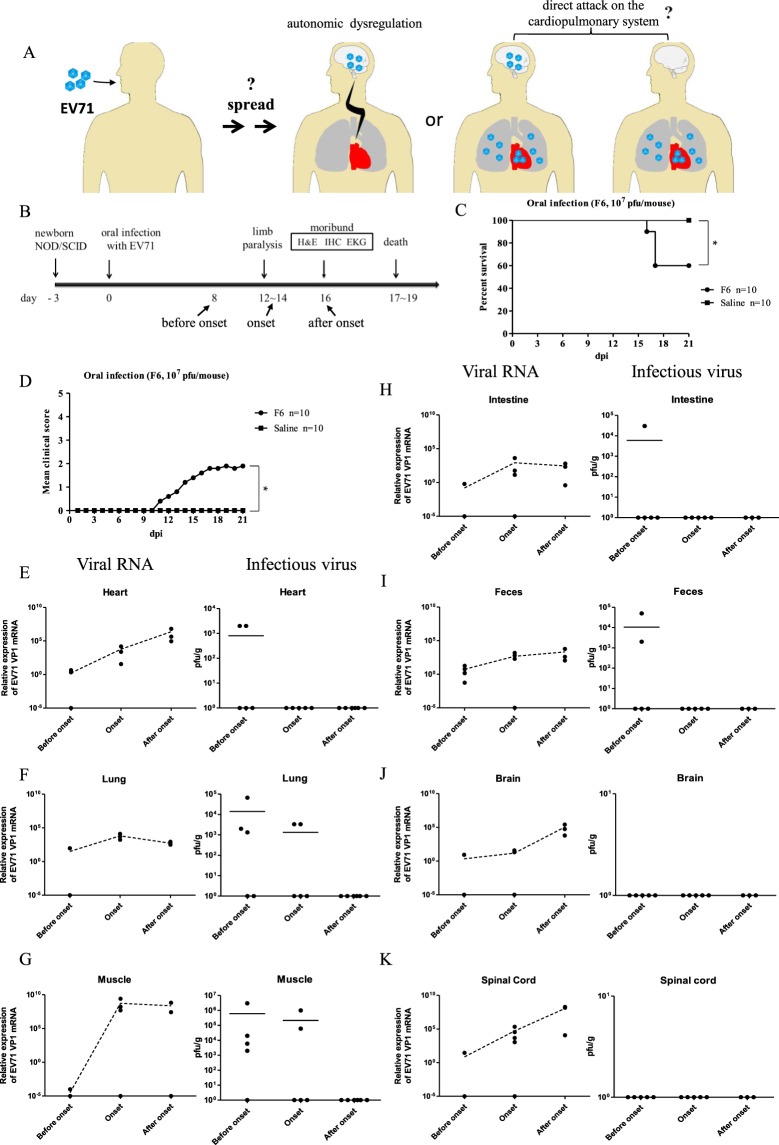Figure 1.
Infection kinetics of EV71 RNA and plaque forming activity in multiple organs in orally infected NOD/SCID mice. (A) Cartoon illustration of the pathogenesis mechanisms of EV71 oral infection. Left panel: A conventional hypothesis postulates that EV71 can cause tachycardia and lung edema from the dysregulated autonomic nerve system in the infected brain. Right panel: An alternative hypothesis is to postulate that EV71 can directly attack heart and lung with or without brain infection. It remains unclear how EV71 can spread to the peripheral tissues after oral intake. (B) Three-day-old NOD/SCID mice were infected orally with 107 pfu of purified EV71-F6 (from infectious clone in Fig. S1) or the saline control. Infected mice with limb paralysis were sacrificed on day 16 post-infection. (C,D) Survival curve and clinical score in NOD/SCID mice orally inoculated with a cloned virus EV71-F6. (C) In a time course experiment, death was observed around day 16, and survival rate is around 60%. Each experimental group contained 10 mice. (D) Clinical scores were defined as follows: 0, healthy; 1, wasting, or ruffled hair; 2, limb weakness; 3, paralysis in only 1 limb; 4, paralysis in 2 to 4 limbs; 5, death. Each experimental group contained 10 mice. *p value less than 0.05. (E–K) Kinetic profiles of viral RNA (qPCR) and infectivity (pfu) from 6 different tissues and feces were compared before, during, and after disease onsets. No apparent clearance of replicating viral RNA was noted. Each solid dot indicates one individual mouse. The dotted lines represent an average of several independent experiments. Horizontal bars in the right column of infectious virus (E-K) indicate averages of pfu.

